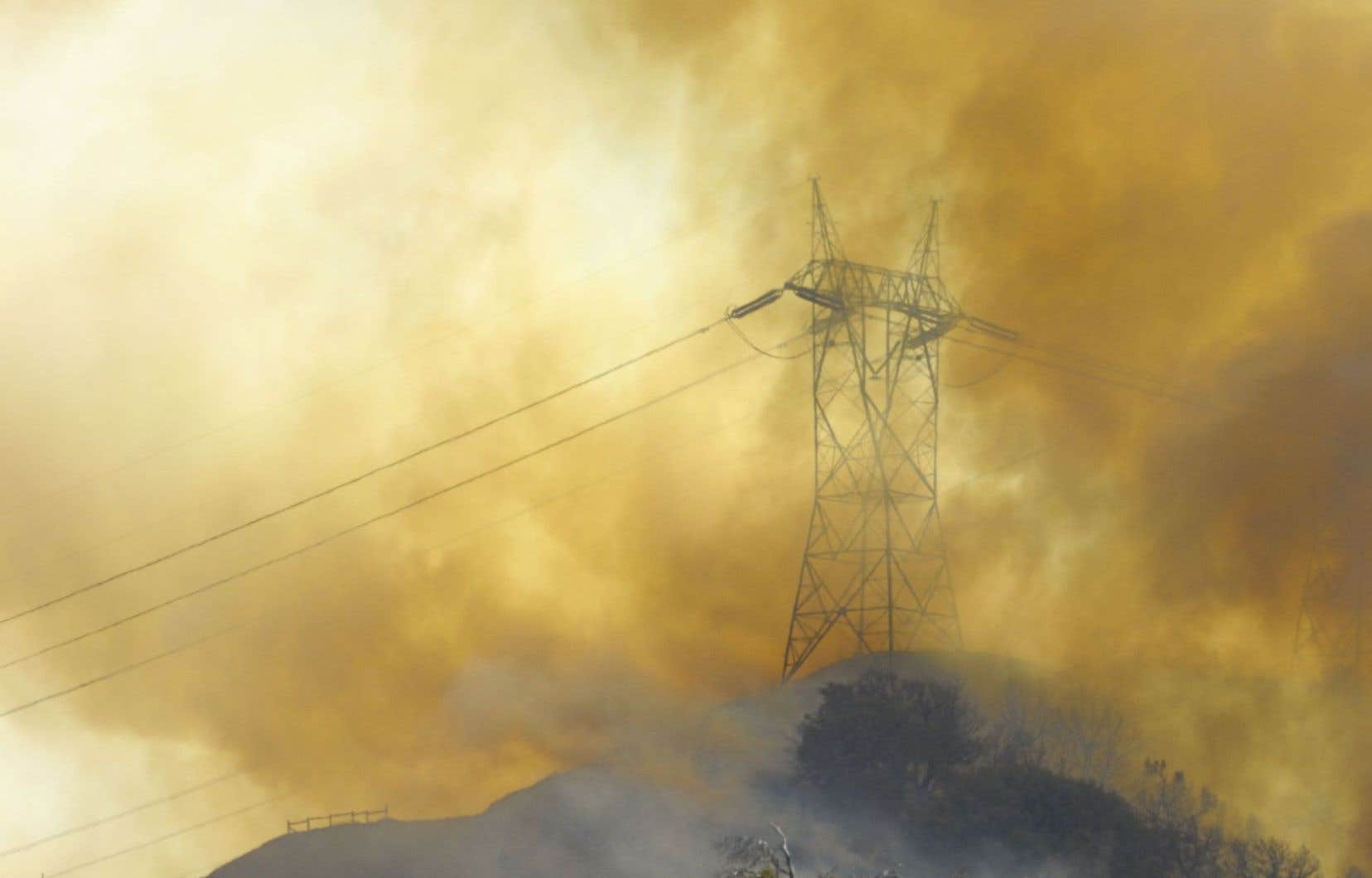Hydro-Québec is on the alert because of a little-known phenomenon that adds to the many current concerns of the Crown corporation: the particles transported by the smoke from forest fires can literally blow up electricity. high-voltage cables to the ground and cause transmission interruptions in the affected substations.
In normal times, the conductors of high voltage lines are naturally insulated by the ambient air, summer and winter alike. Forest fires, however, with their thick particle-laden smoke, suddenly install a conductor.
“These particles can serve as a springboard for electricity to pass from the high voltage line to the ground, which can cause tripping in our substations to protect the installations”, explains Francis Labbé, spokesperson at Hydro-Québec.
“When the air is normal, it acts as an insulator which allows the cables to do their job, but when it is saturated with particles, this is where the conductivity phenomenon occurs. The particles eventually deflect the electricity and conduct it to the ground and this causes a trigger,” he continues.
These trips are automated and occur when the protection systems detect voltage fluctuations, which is inevitable when the surrounding air is saturated with particles that seize energy to transport it to the ground.
Responsible for a major breakdown
It is this phenomenon that explains the major outage at the beginning of the month, the one that was said, precisely, to be caused by forest fires, but on the North Shore.
“Thursday 1er June, there are two lines coming from Churchill Falls, high voltage lines at 735 kV, which tripped at the same time for the same reason, that is to say very abundant particles in the smoke, ”says Francis Labbe.
“The fact that there were two lines affected at the same time caused an outage for 240,000 customers, but gradually, from the first minutes, we were able to bring people back. The next day, there was the same phenomenon on a smaller scale in the Abitibi regional network with 44,000 subscribers affected. »
In both cases, power was restored fairly quickly because of the redundancies included in the transmission network and because the state company’s equipment had not been damaged.
“These are the only two events in this entire forest fire season for which there have been consequences for consumers, argues Mr. Labbé. The rest of the time, the protections are installed and we are able to distribute the loads on the network so that it does not appear. »
Worrying worsening
Obviously, the worsening of the current situation in Nord-du-Québec, where the fires are getting bigger and bigger due to extremely unfavorable conditions, is worrying, he acknowledges.
“So far so good. There are facilities that are geographically closer to certain fires. We are in action with SOPFEU to contain them and that somewhat limits the approach of smoke to our facilities, but it is clear that our high voltage lines are on the same territory as the fires. We are on lookout, things are going well so far, but there will be many of us in Quebec, in the coming days, hoping for rain in the North. »
Hydro-Québec also relies on its strong redundancy to deal with tripping in transmission line substations, which always occur, but which are barely perceptible to its customers. Even so, it’s still not uncommon these days to see lights fluctuate or electronic devices lose time after a fluctuation that lasts even a fraction of a second.
Evacuations at LG-3 and LG-4
Beyond these concerns, the state corporation is not immune to the more direct threats posed by the immense forest fires. About 100 workers at its hydroelectric plants had to be evacuated by air as a precaution on Tuesday, and more evacuations were planned for Wednesday.
Almost all the employees of the LG-3 power station, located in Nord-du-Québec, have been evacuated and the approximately 90 workers of the LG-4 power station will also be evacuated by plane.
On the other hand, the flames do not threaten the power stations, affirms Francis Labbé, who explains that these are more preventive evacuations because the forest fires jeopardize access by the Transtaïga road, the only road link between these centers.
A few employees remain on site at LG-3 and LG-4 to operate the turbine-generators and monitor operations. According to the state-owned company, the evacuations should only last a few days.
